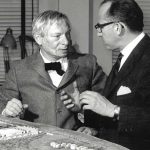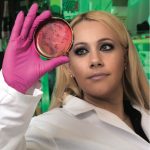Along with Professor Juan Carlos Izpisua Belmonte, first authors Jun Wu, Reyna Hernandez-Benitez, Keiichiro Suzuki and colleagues discovered the ability to, for the first time, insert DNA at a target location into the nondividing cells that make up the majority of adult organs and tissues. The technique, which the team showed was able to partially restore visual responses in blind rodents, will open new avenues for basic research and a variety of treatments, such as for retinal, heart and neurological diseases.
Regeneration
Turning back time: Salk scientists reverse signs of aging
Salk Professor Juan Carlos Izpisua Belmonte, along with first authors Alejandro Ocampo, Paloma Martinez-Redondo, Pradeep Reddy and colleagues, found that intermittent expression of genes normally associated with an embryonic state can reverse the hallmarks of old age. Their approach, which not only prompted human skin cells in a dish to look and behave young again, also resulted in the rejuvenation of mice with a premature aging disease, countering signs of aging and increasing the animals’ lifespan by 30 percent. The early-stage work provides insight both into the cellular drivers of aging as well as possible therapeutic approaches for improving human health and longevity. The Salk researchers believe that induction of epigenetic changes via chemicals or small molecules may be the most promising approach to achieve rejuvenation in humans.
Featured Stories
 A Masterful DesignMaintaining the Salk Institute’s iconic architectural vision.
A Masterful DesignMaintaining the Salk Institute’s iconic architectural vision. Inside the Mind of Ted WaittWhether it’s vital funding, imaginative technology or the perspective of a successful CEO, new Board Chair Ted Waitt says adding a little magic in the right place enables great discoveries.
Inside the Mind of Ted WaittWhether it’s vital funding, imaginative technology or the perspective of a successful CEO, new Board Chair Ted Waitt says adding a little magic in the right place enables great discoveries. Surviving SuperbugsWe’re losing the war with infectious diseases. Ending the arms race with infectious diseases could mean learning to live with them.
Surviving SuperbugsWe’re losing the war with infectious diseases. Ending the arms race with infectious diseases could mean learning to live with them.




















































